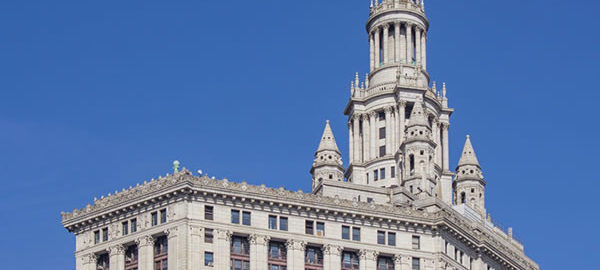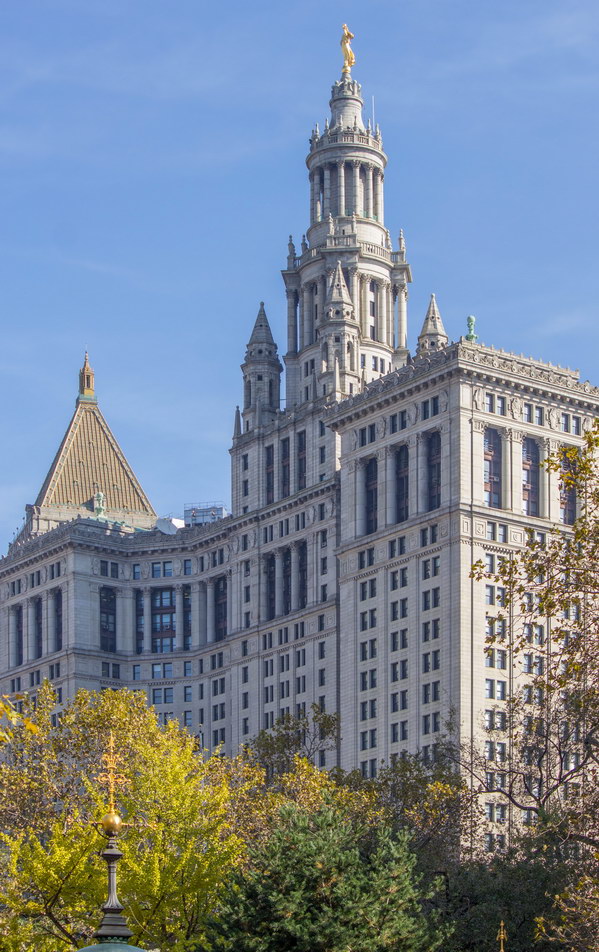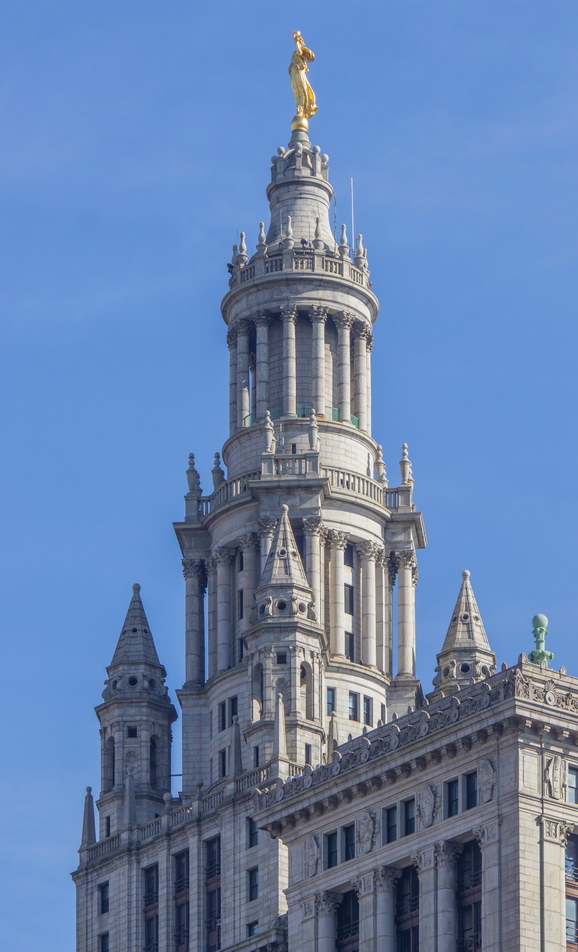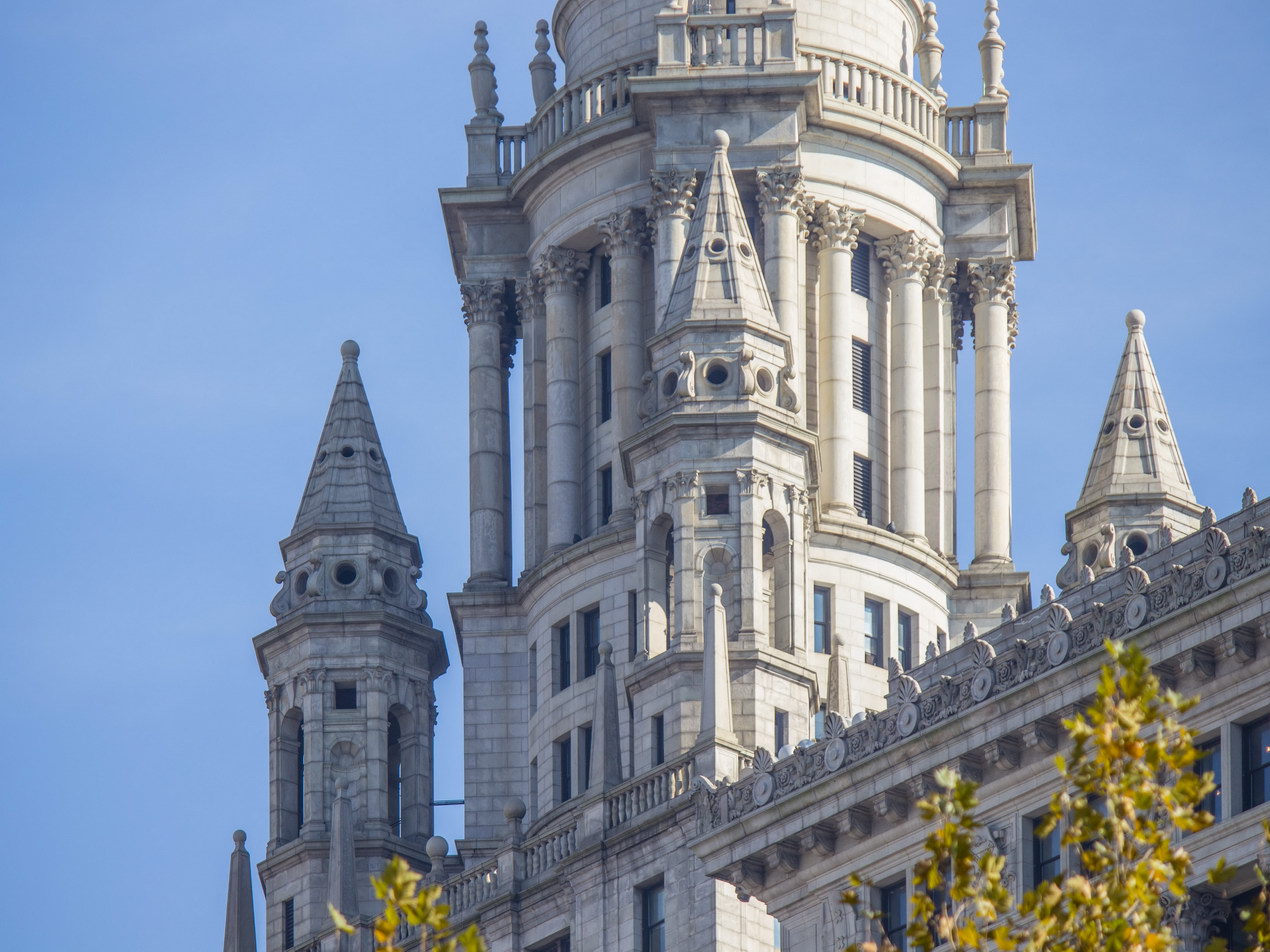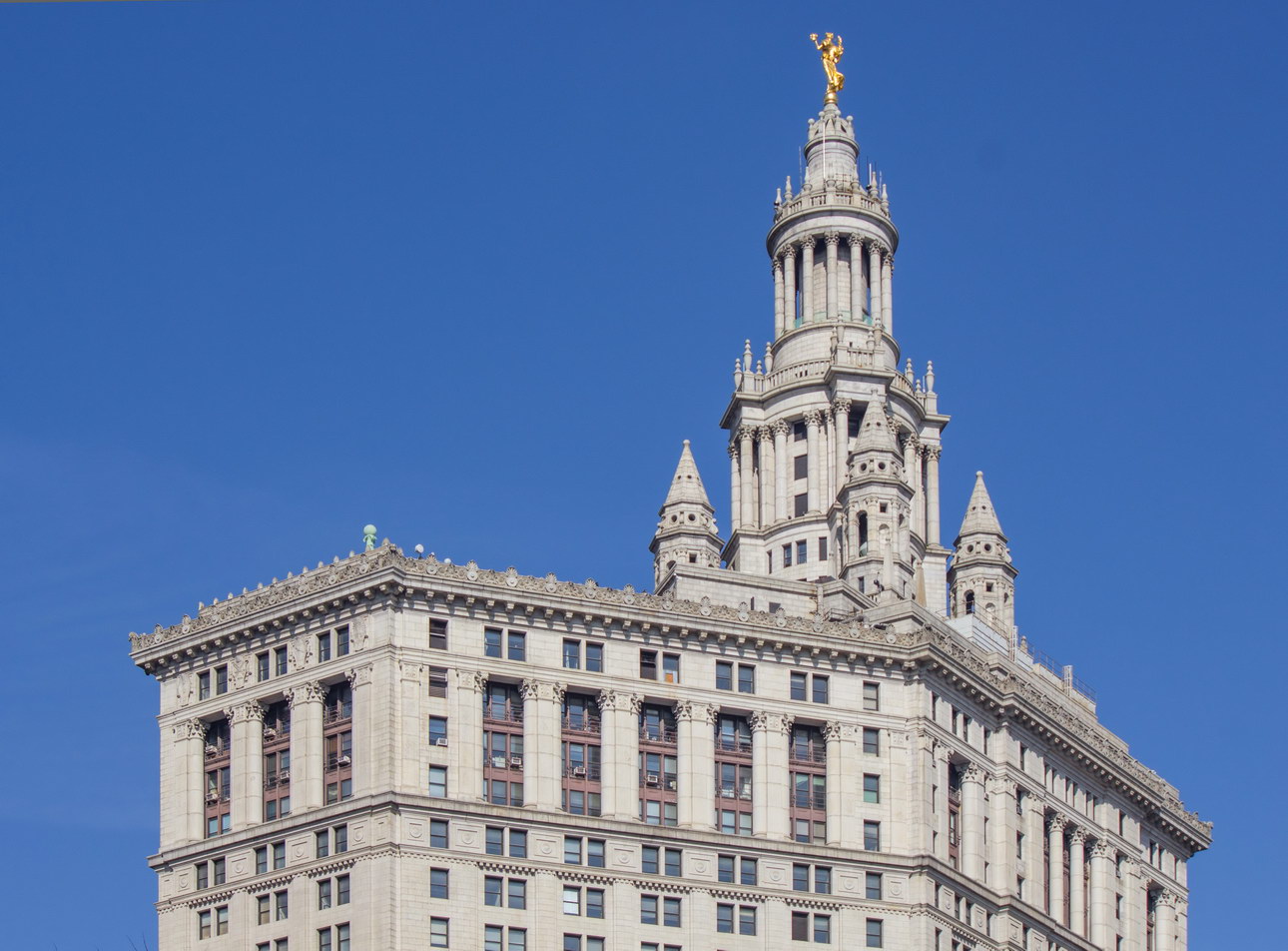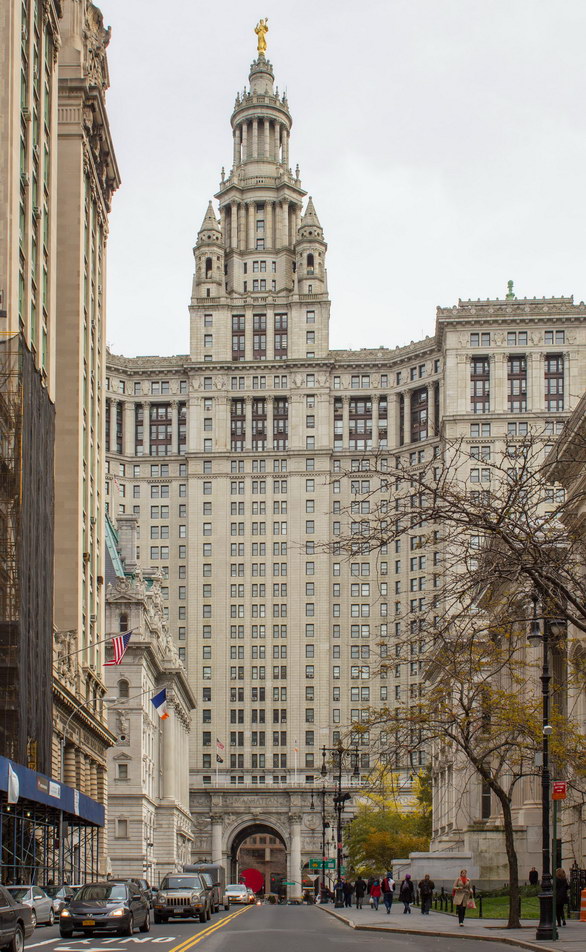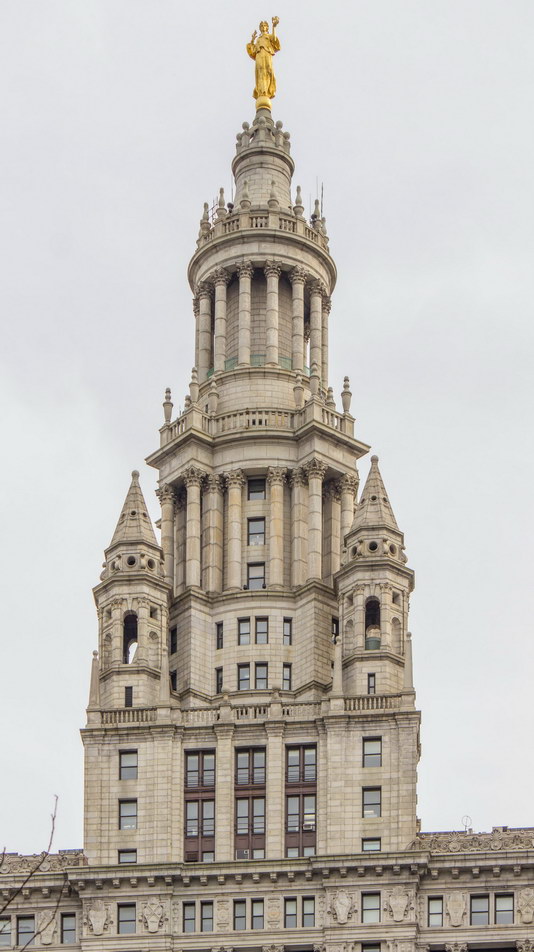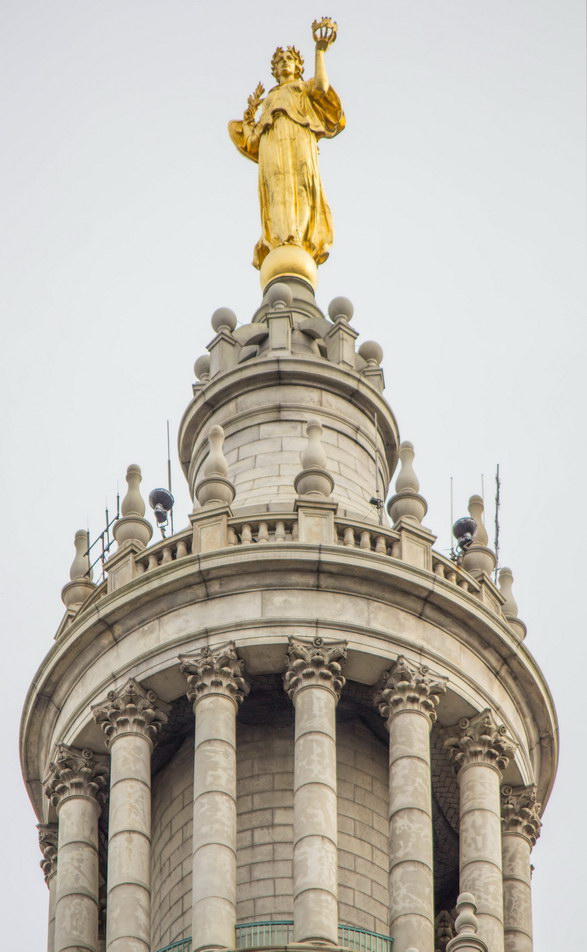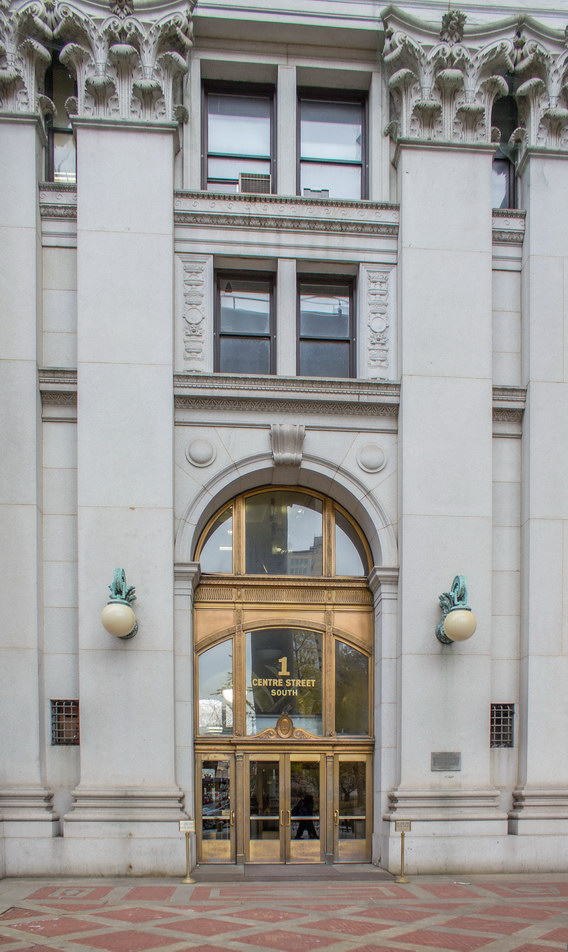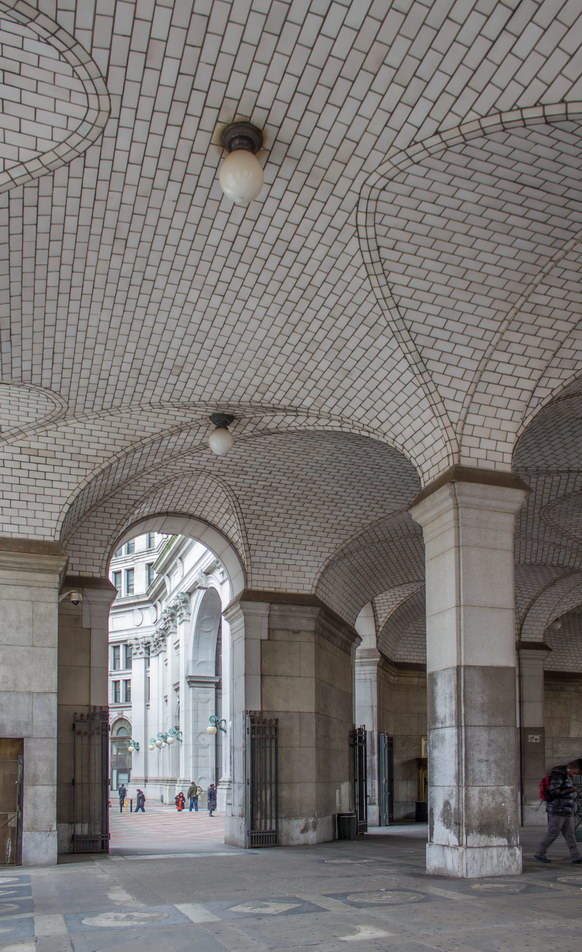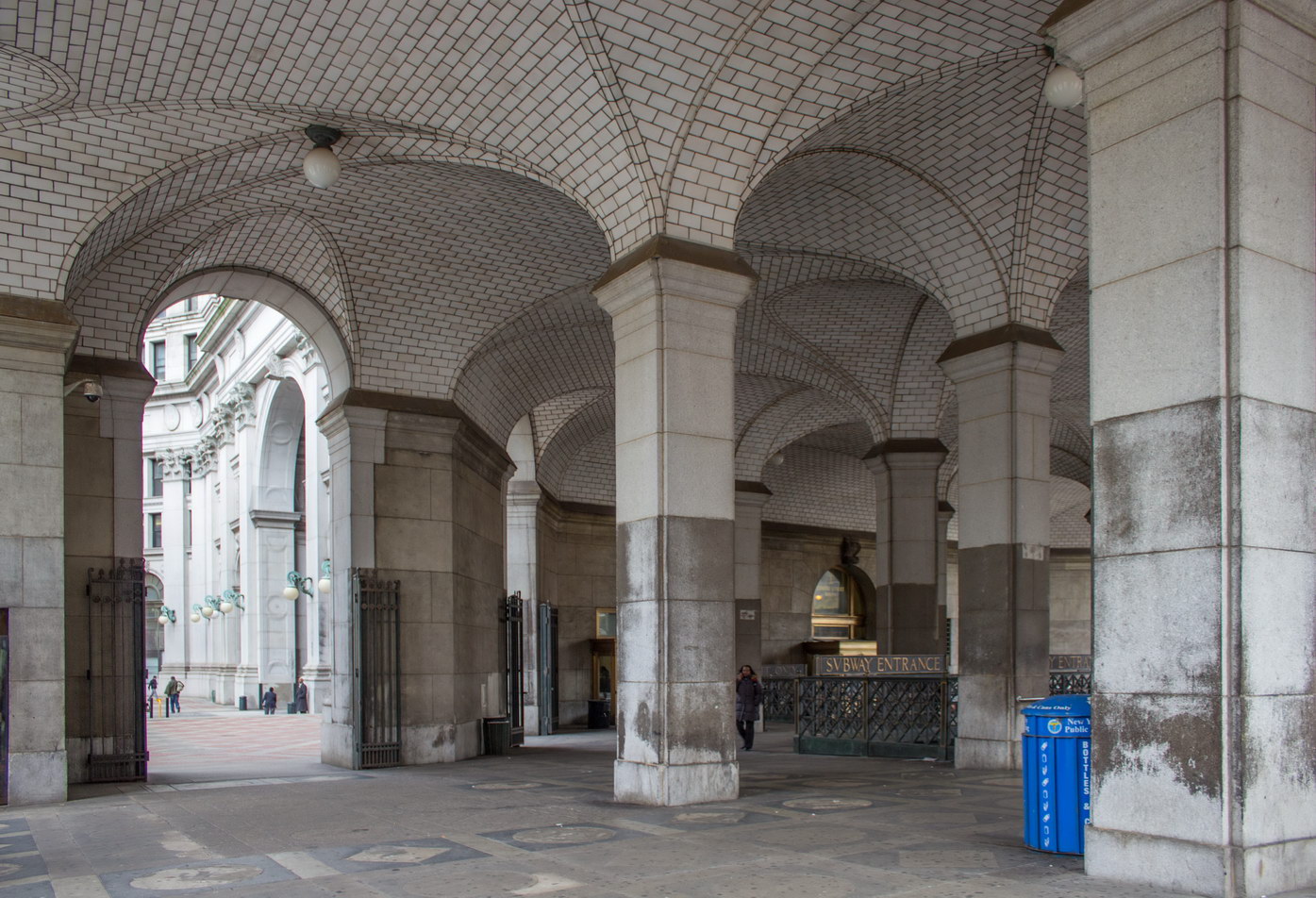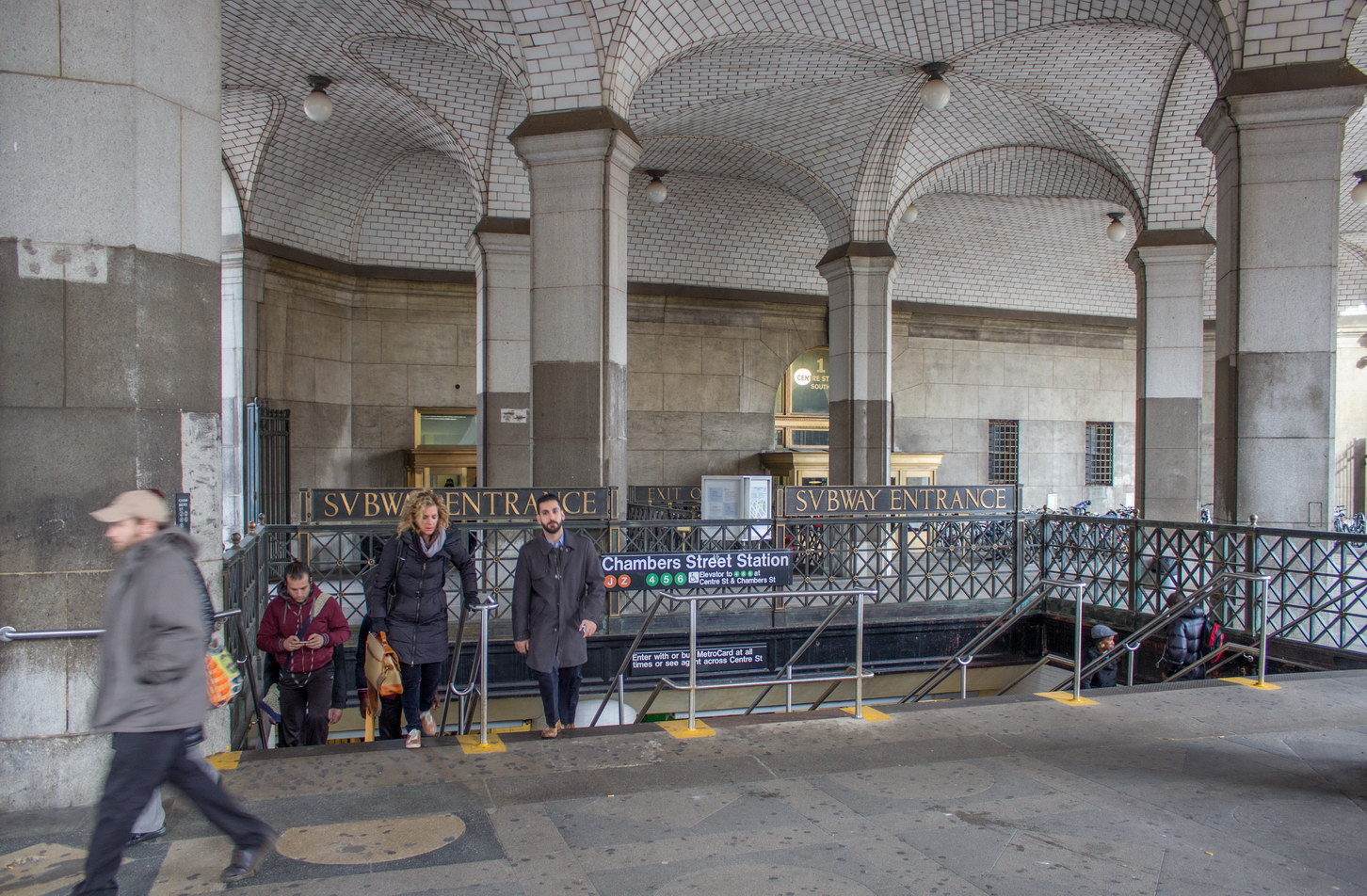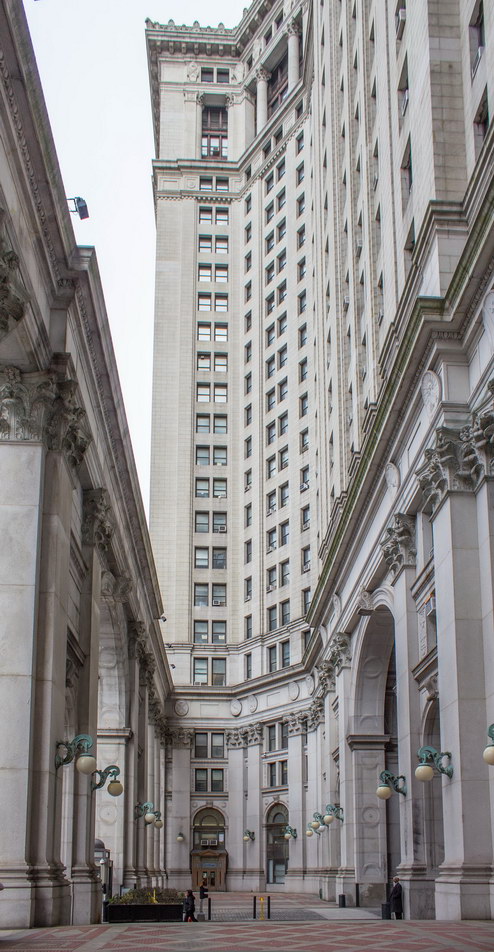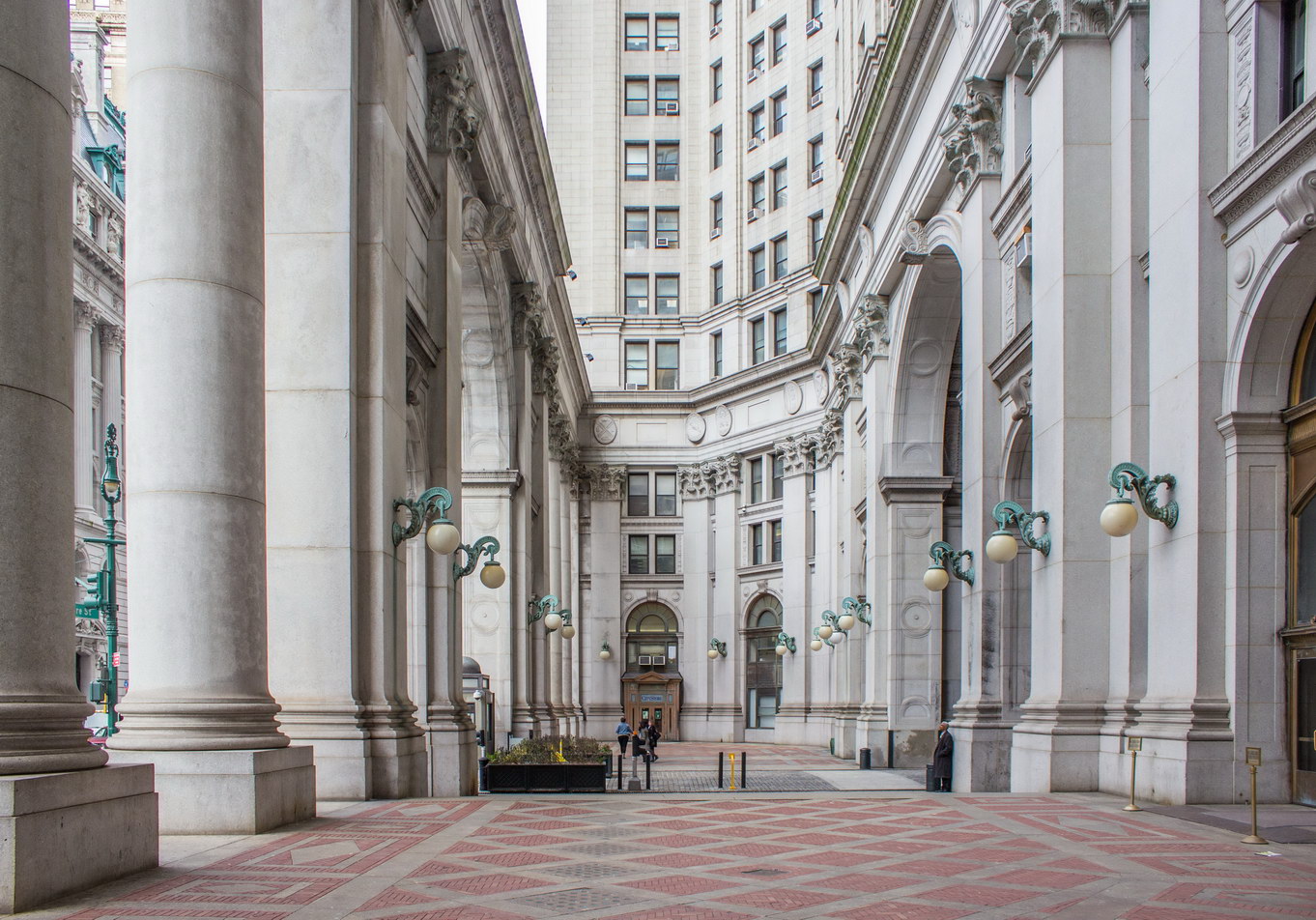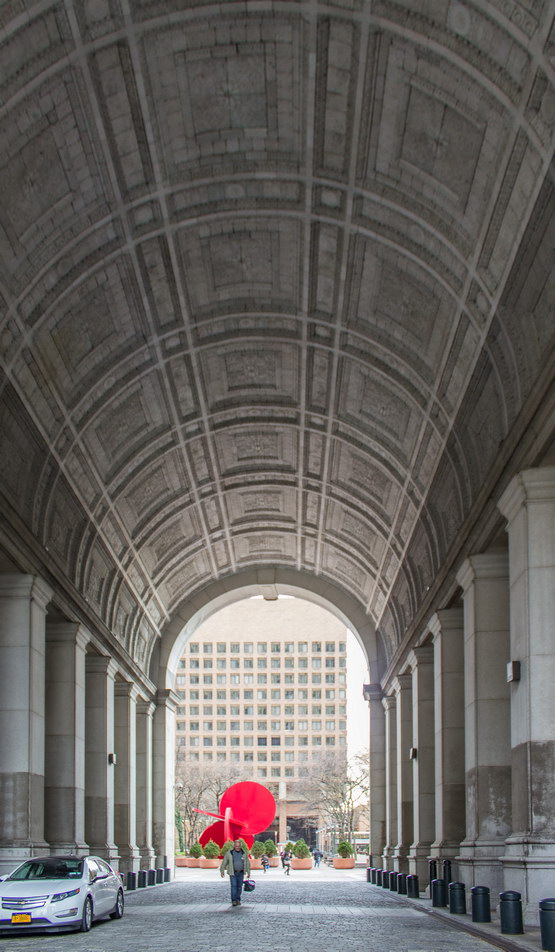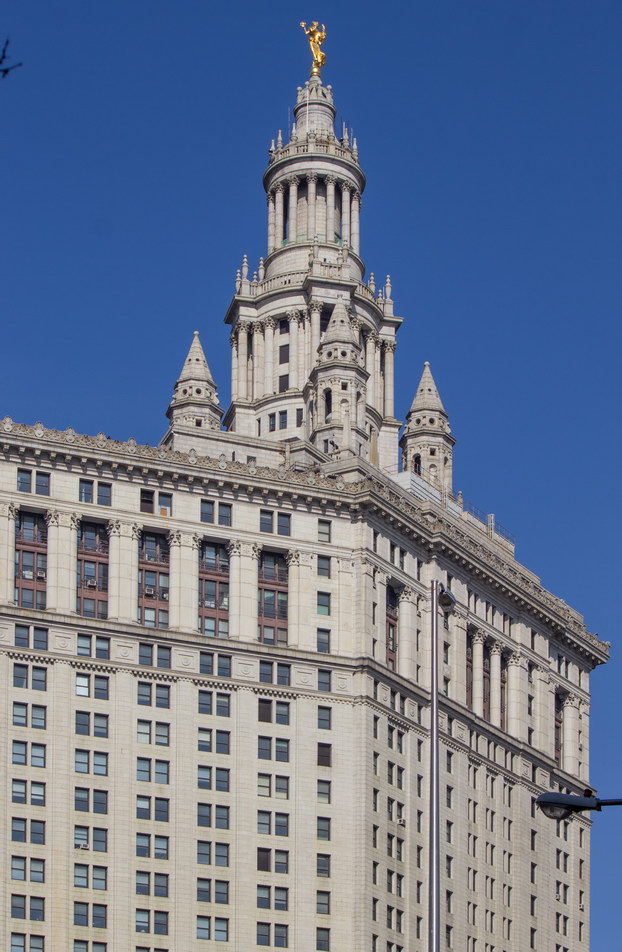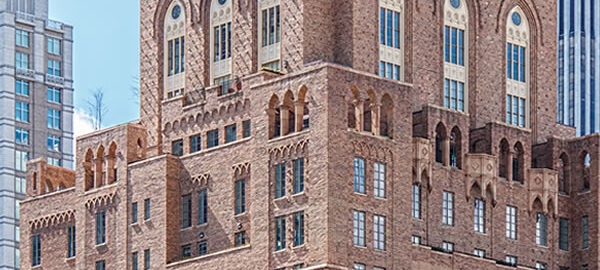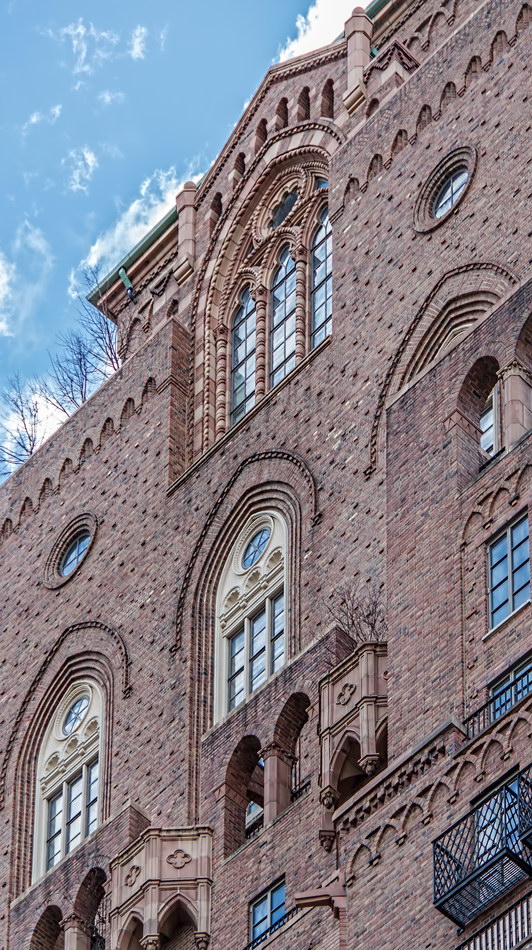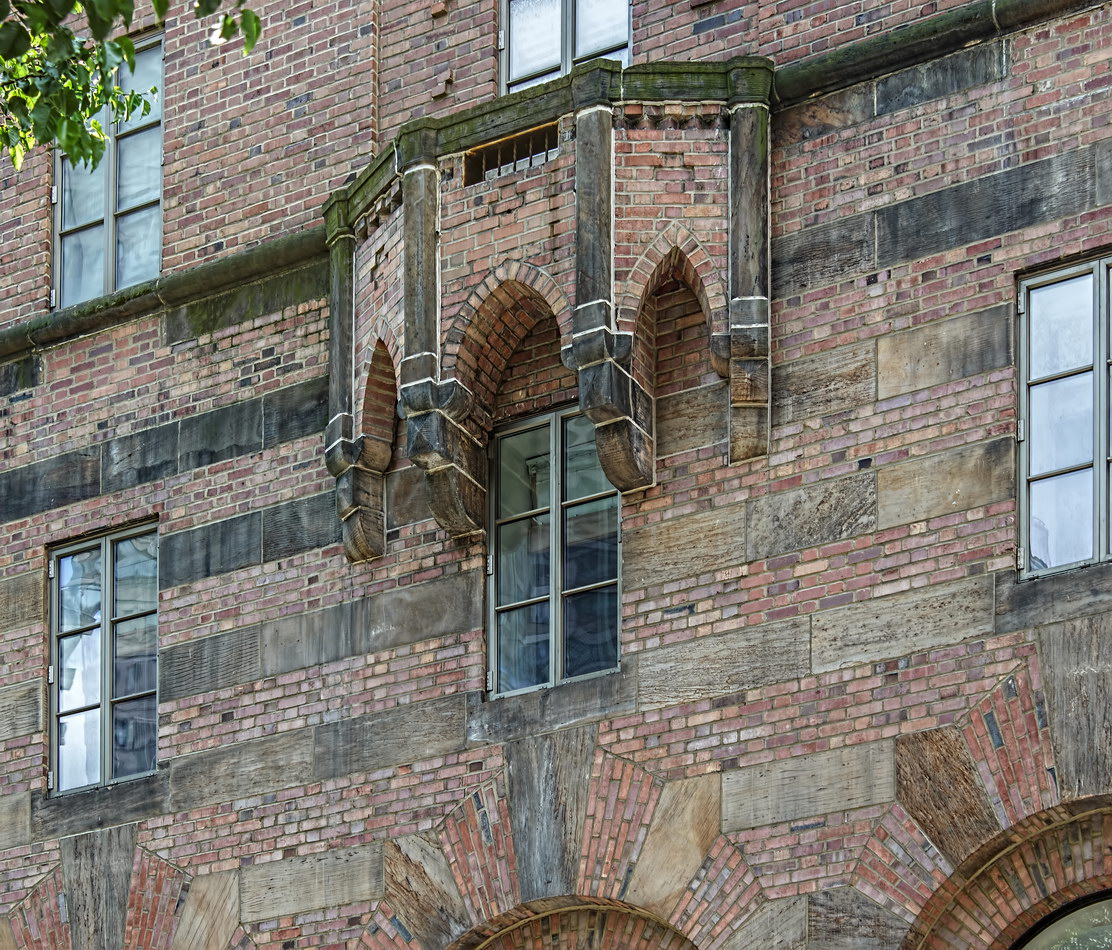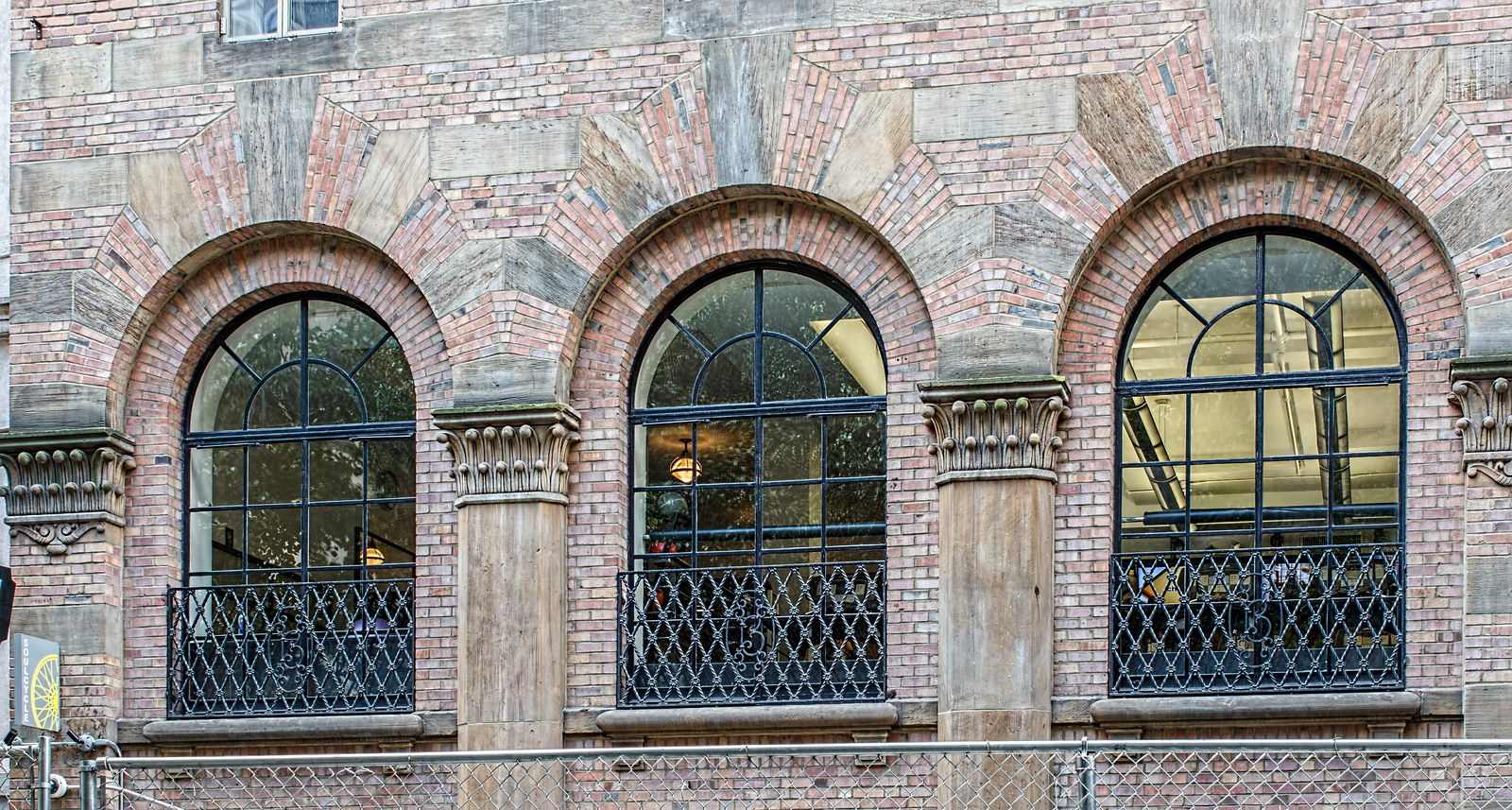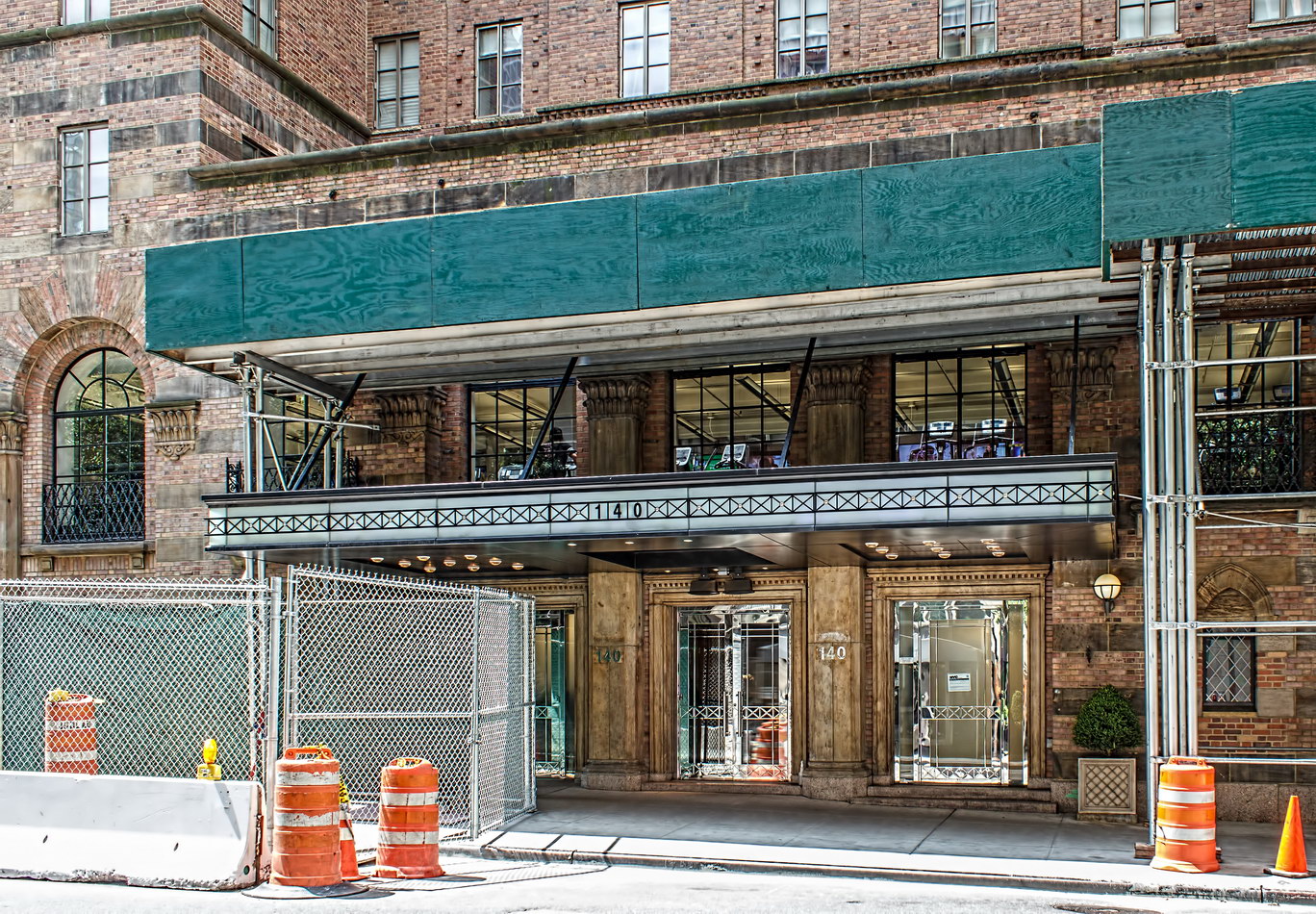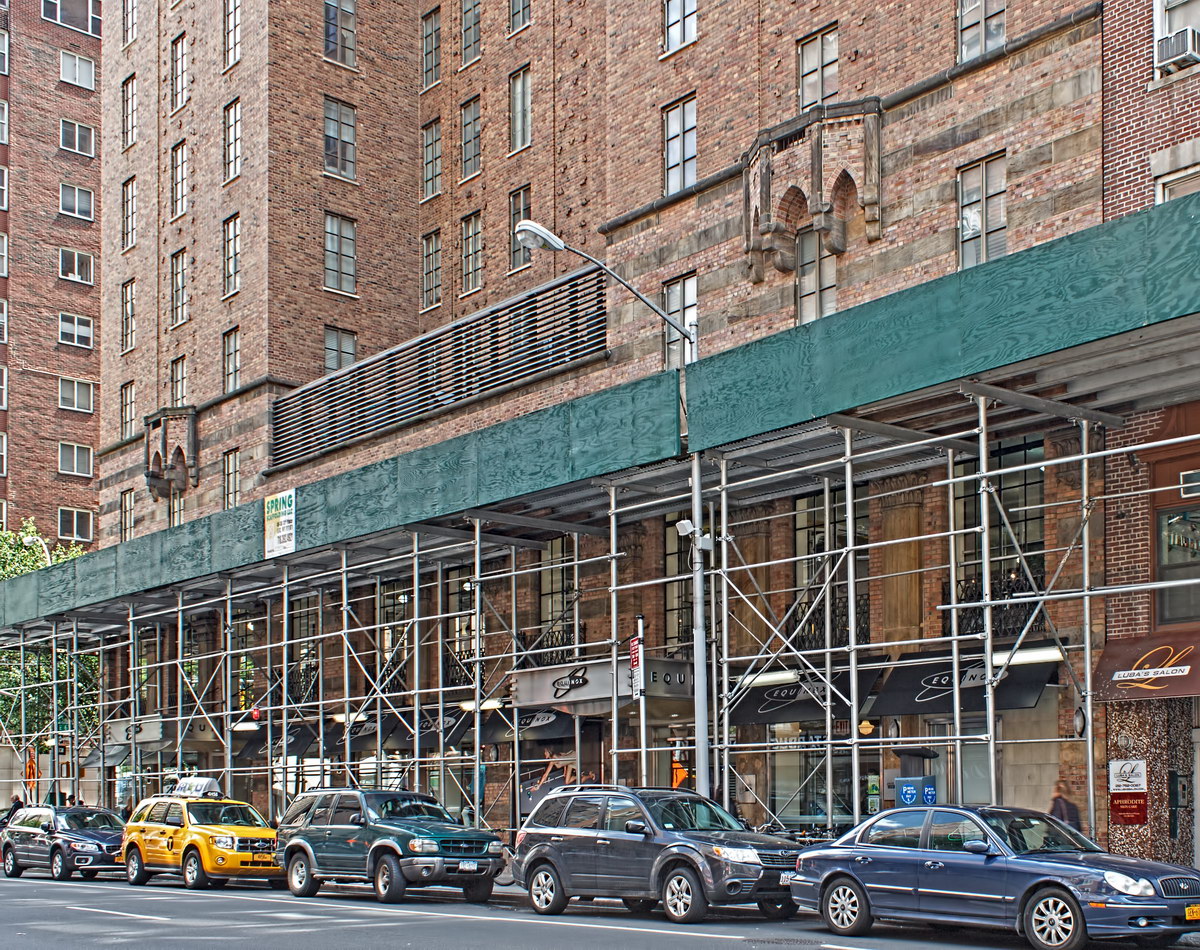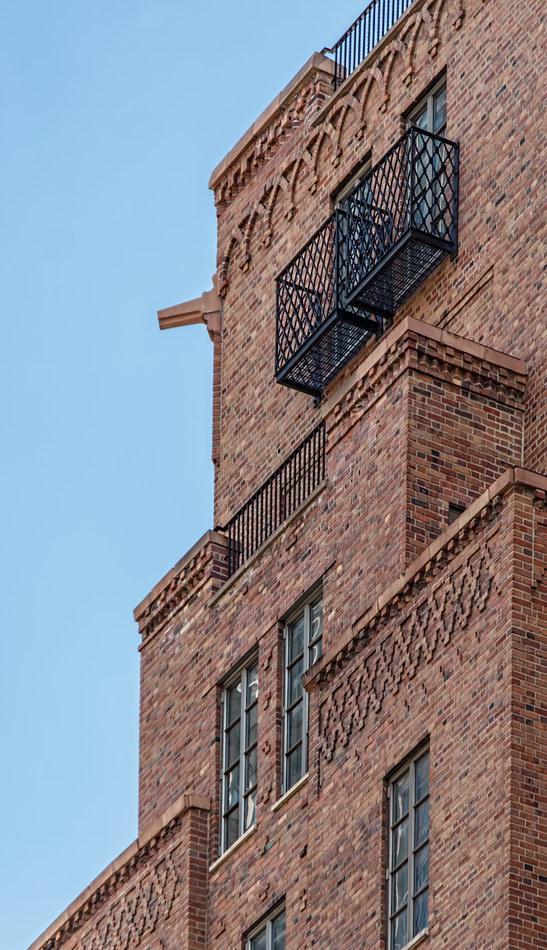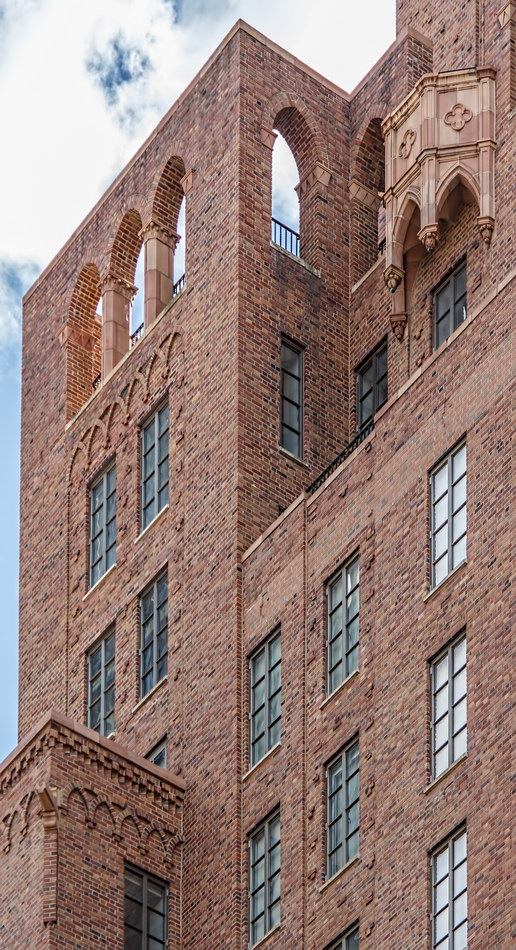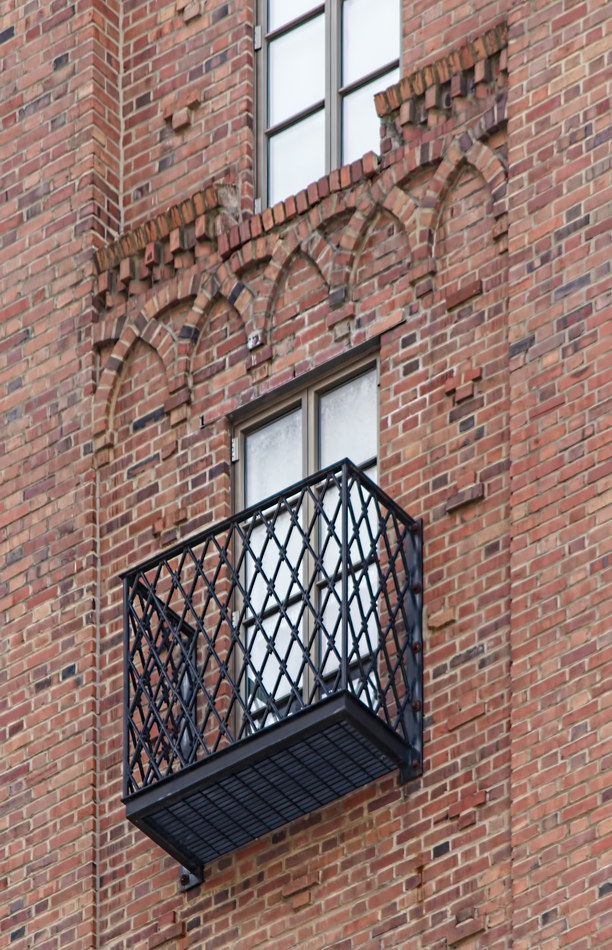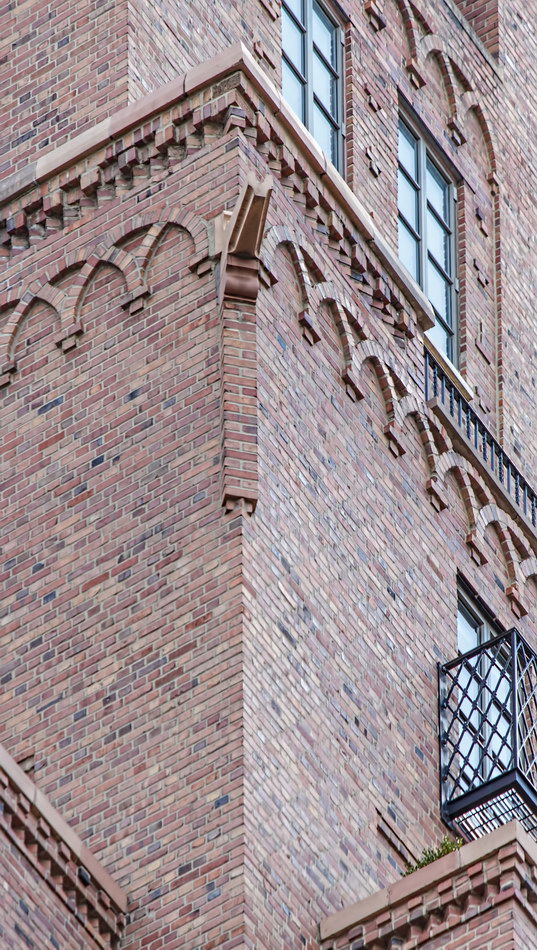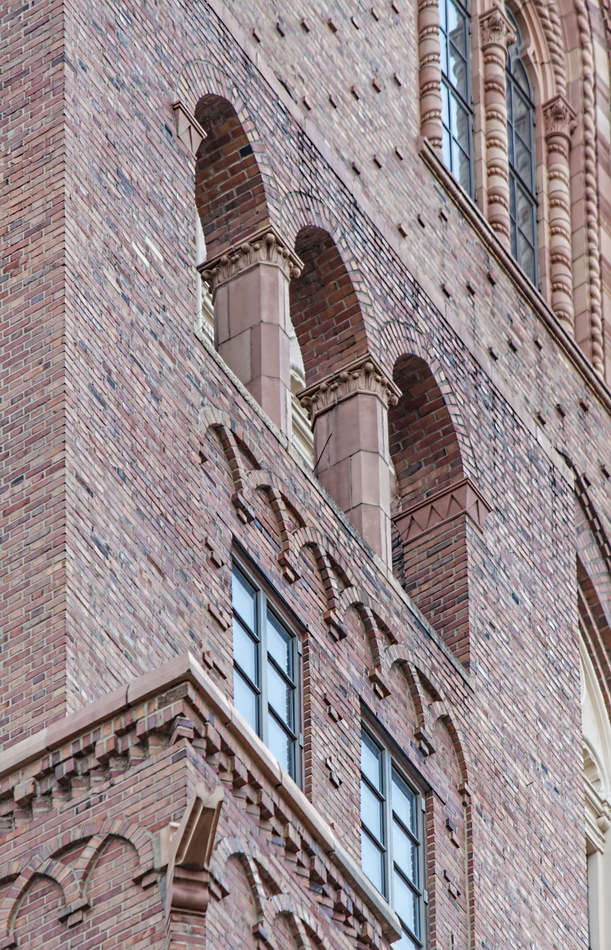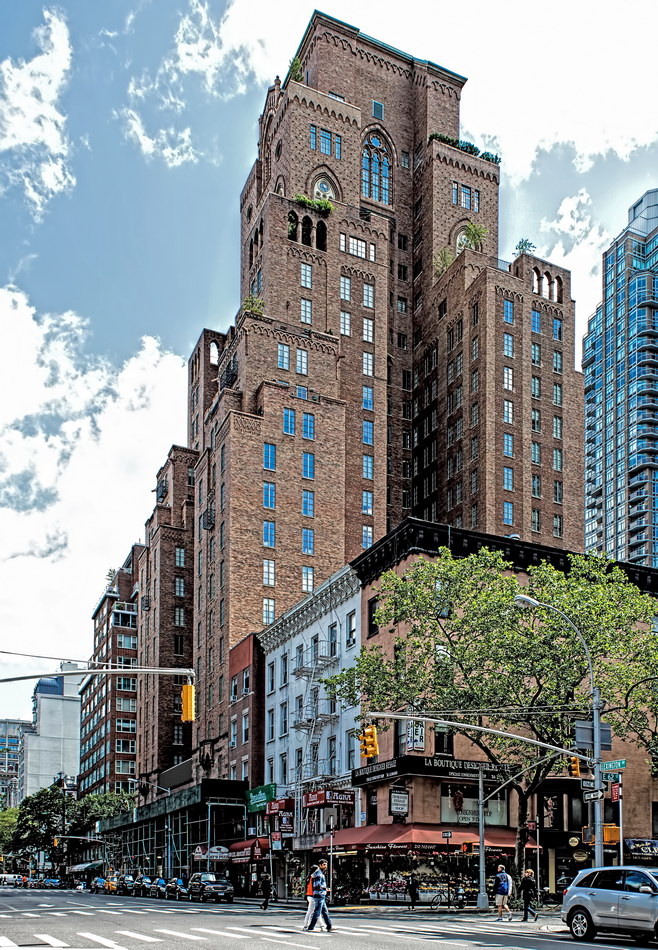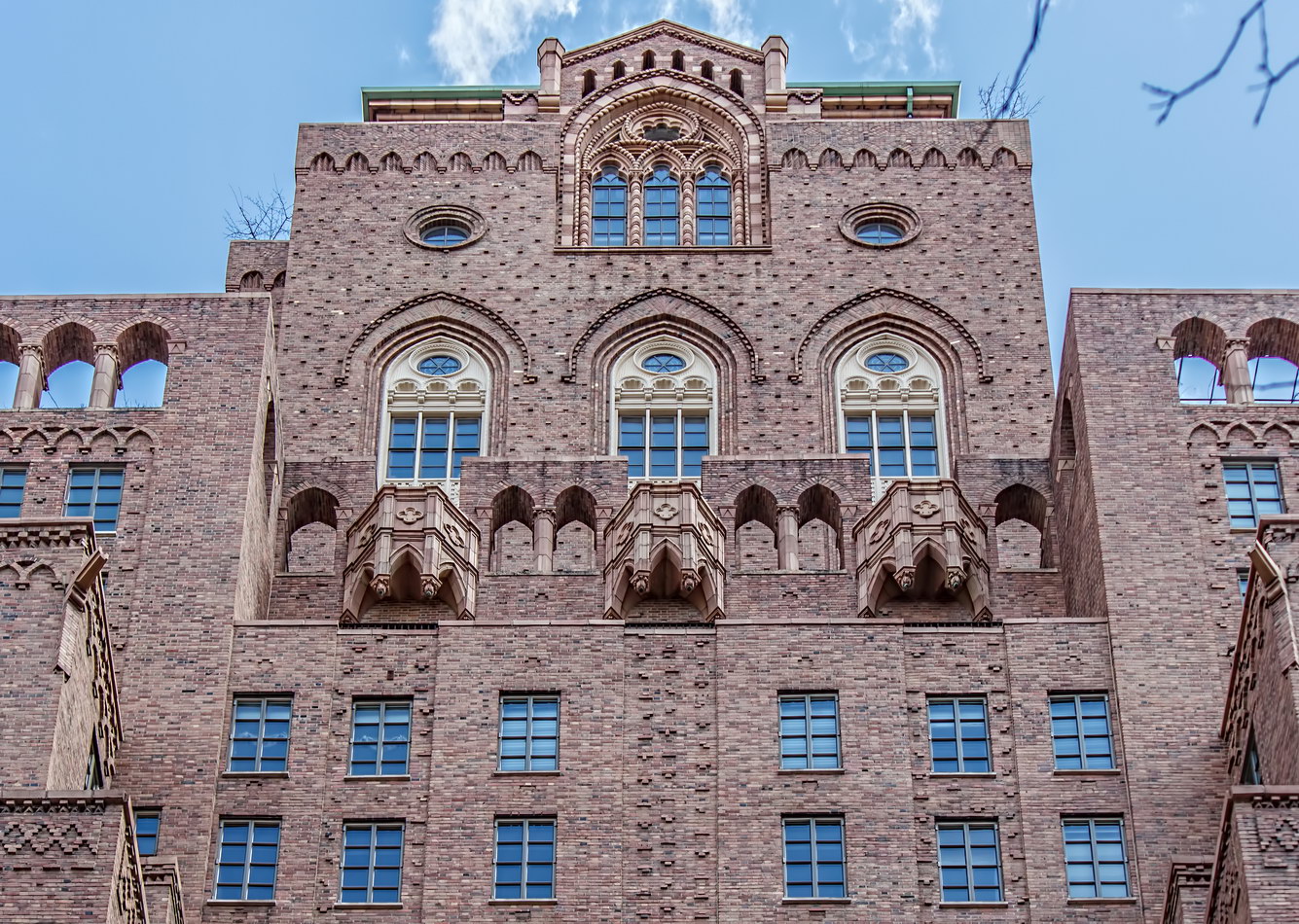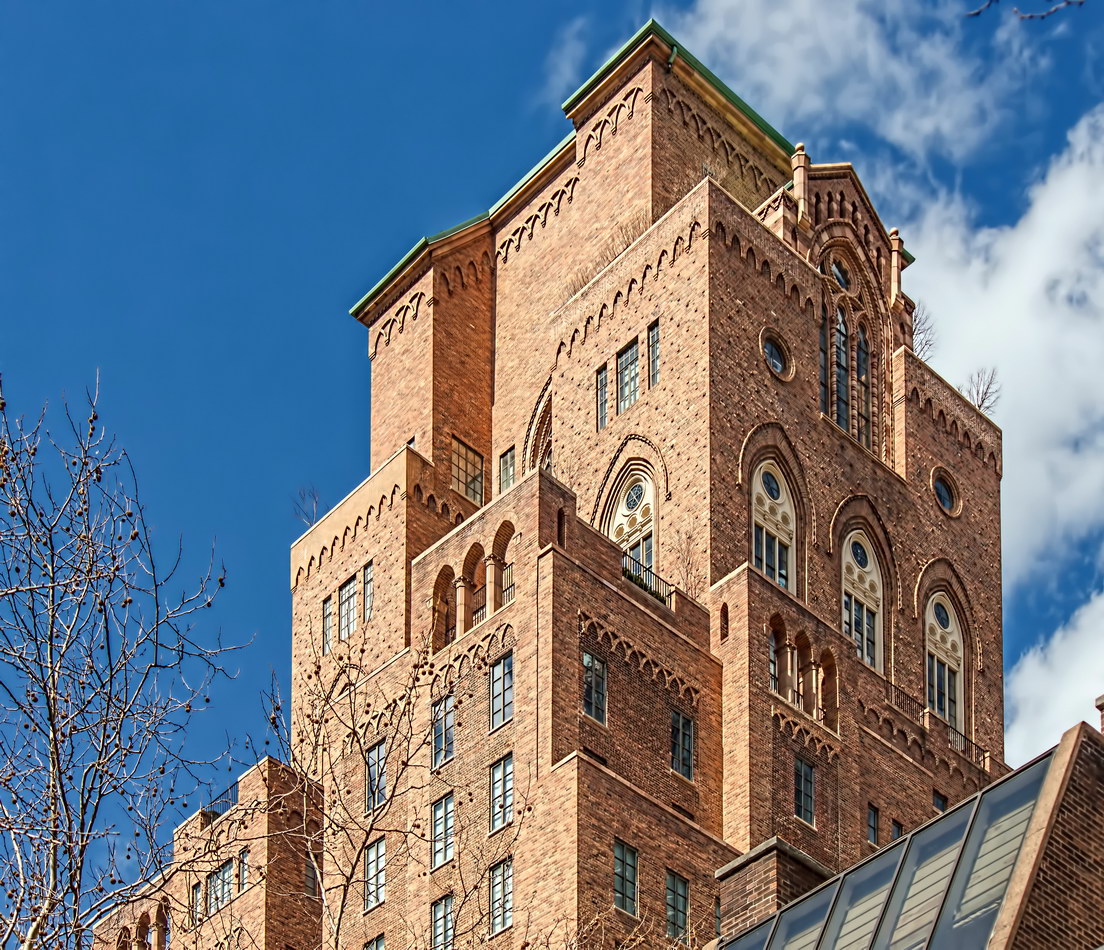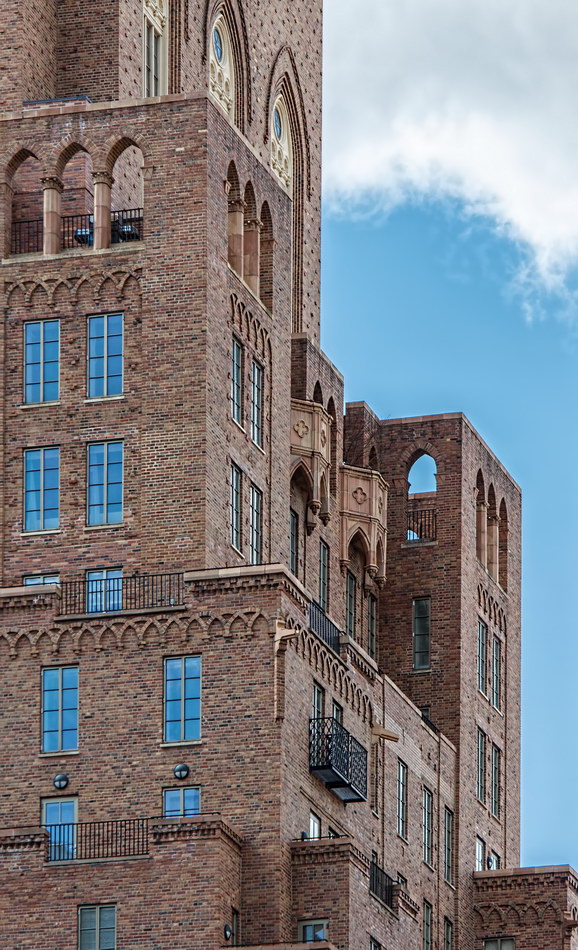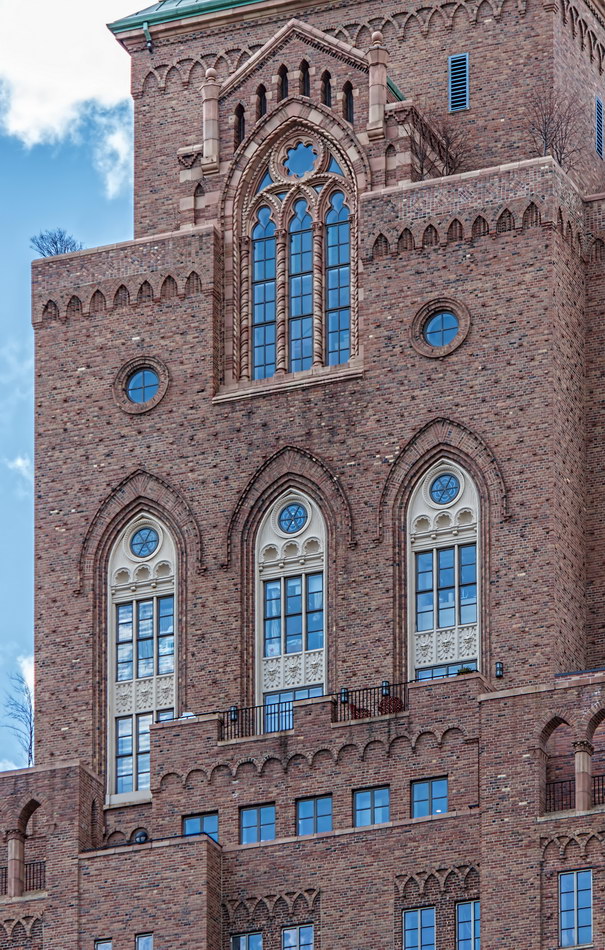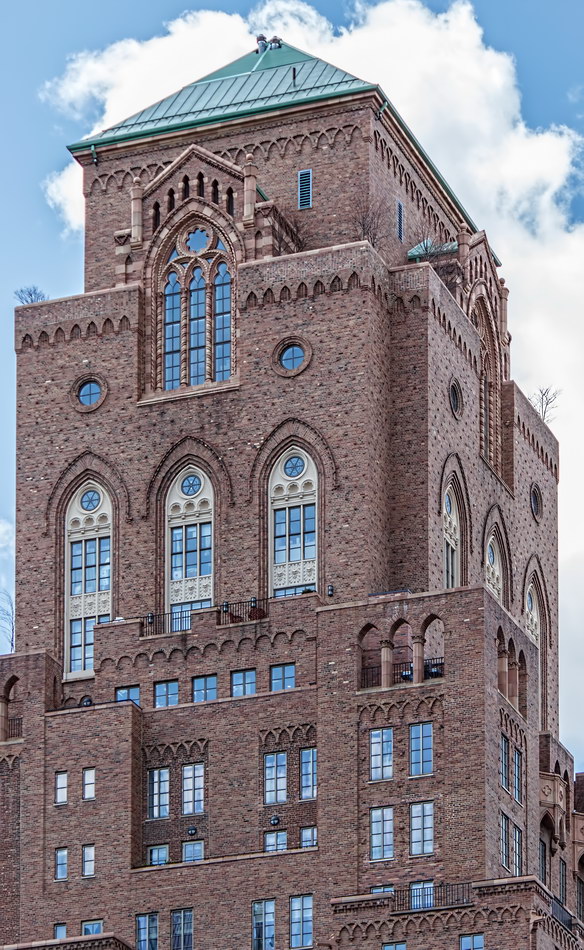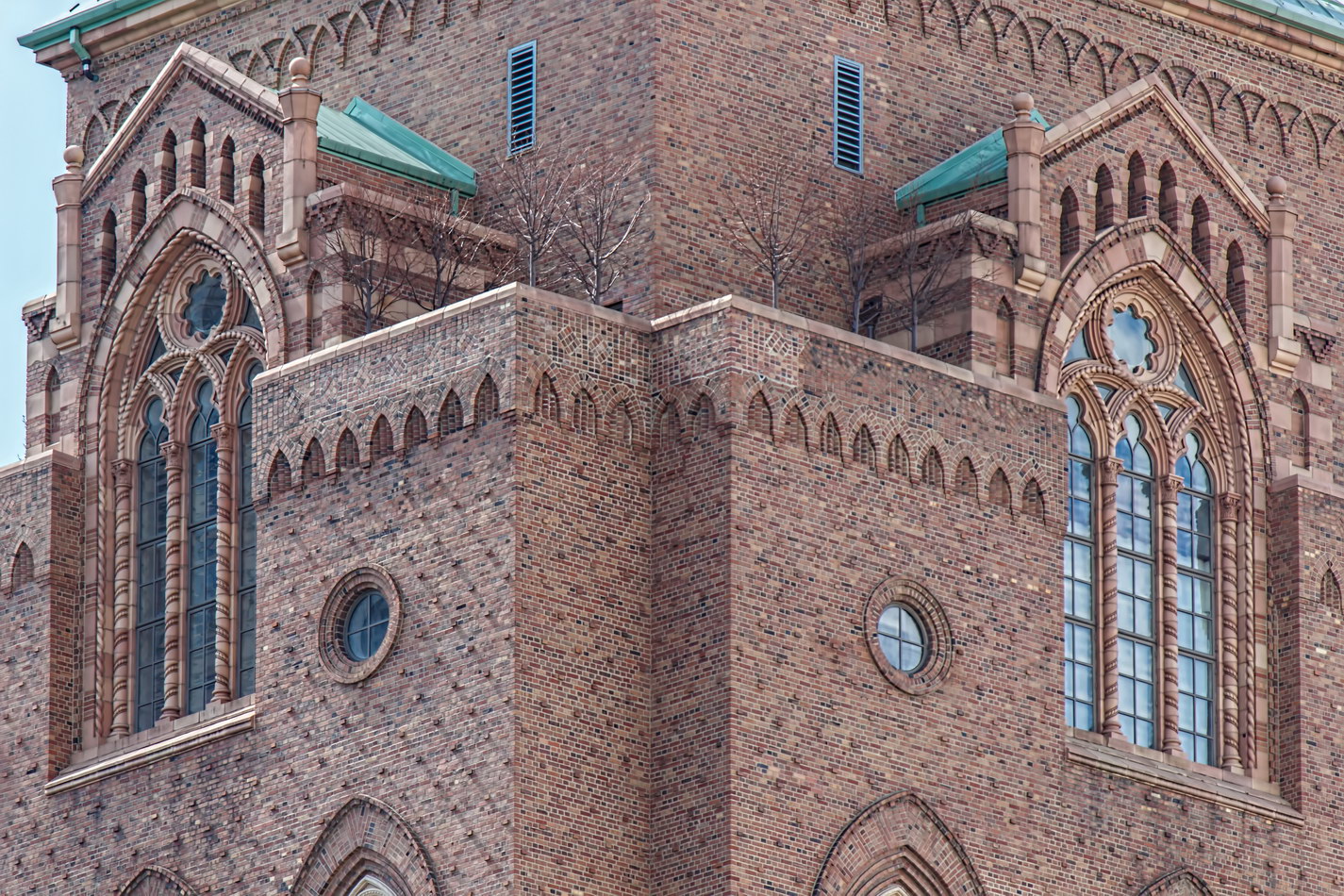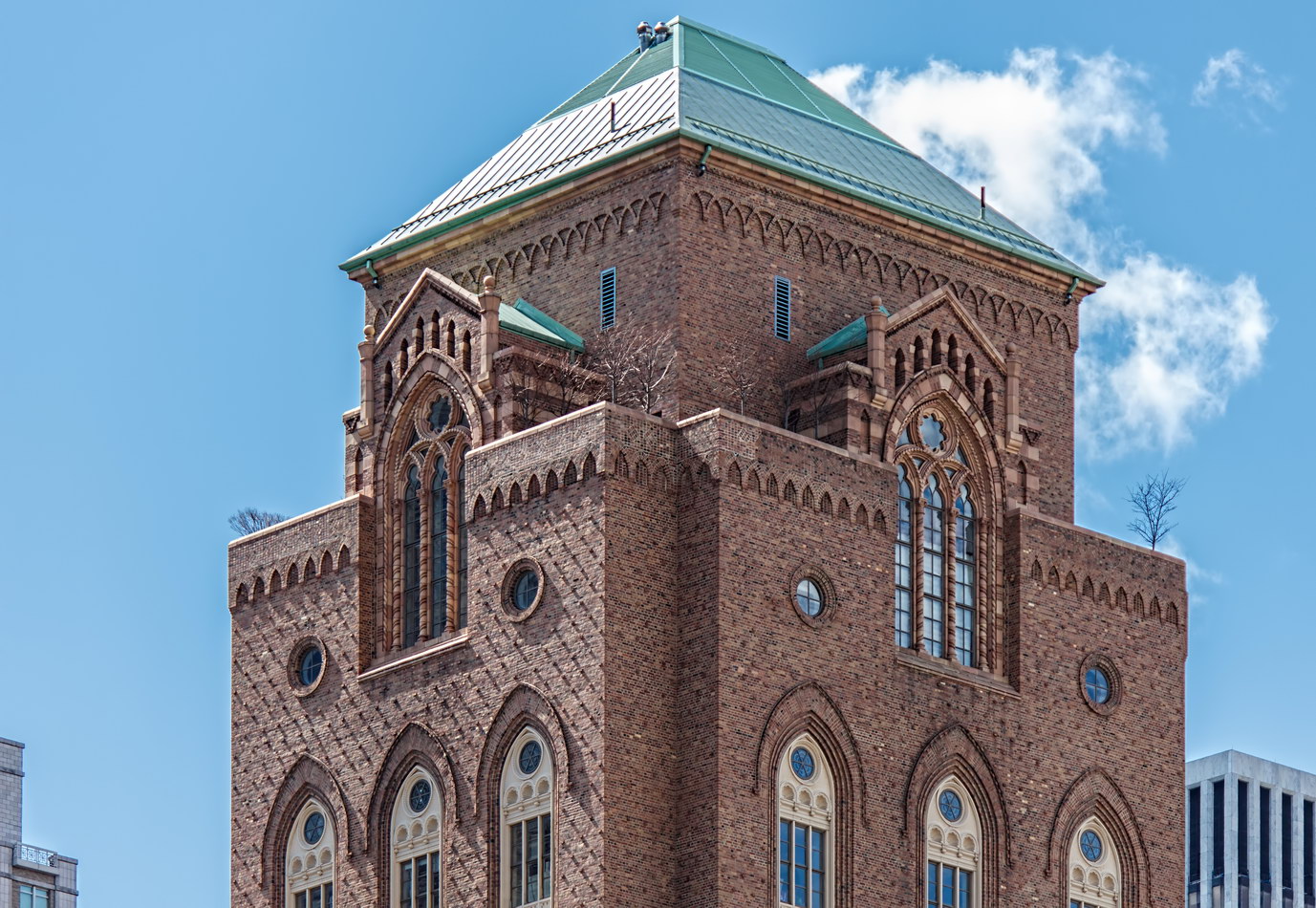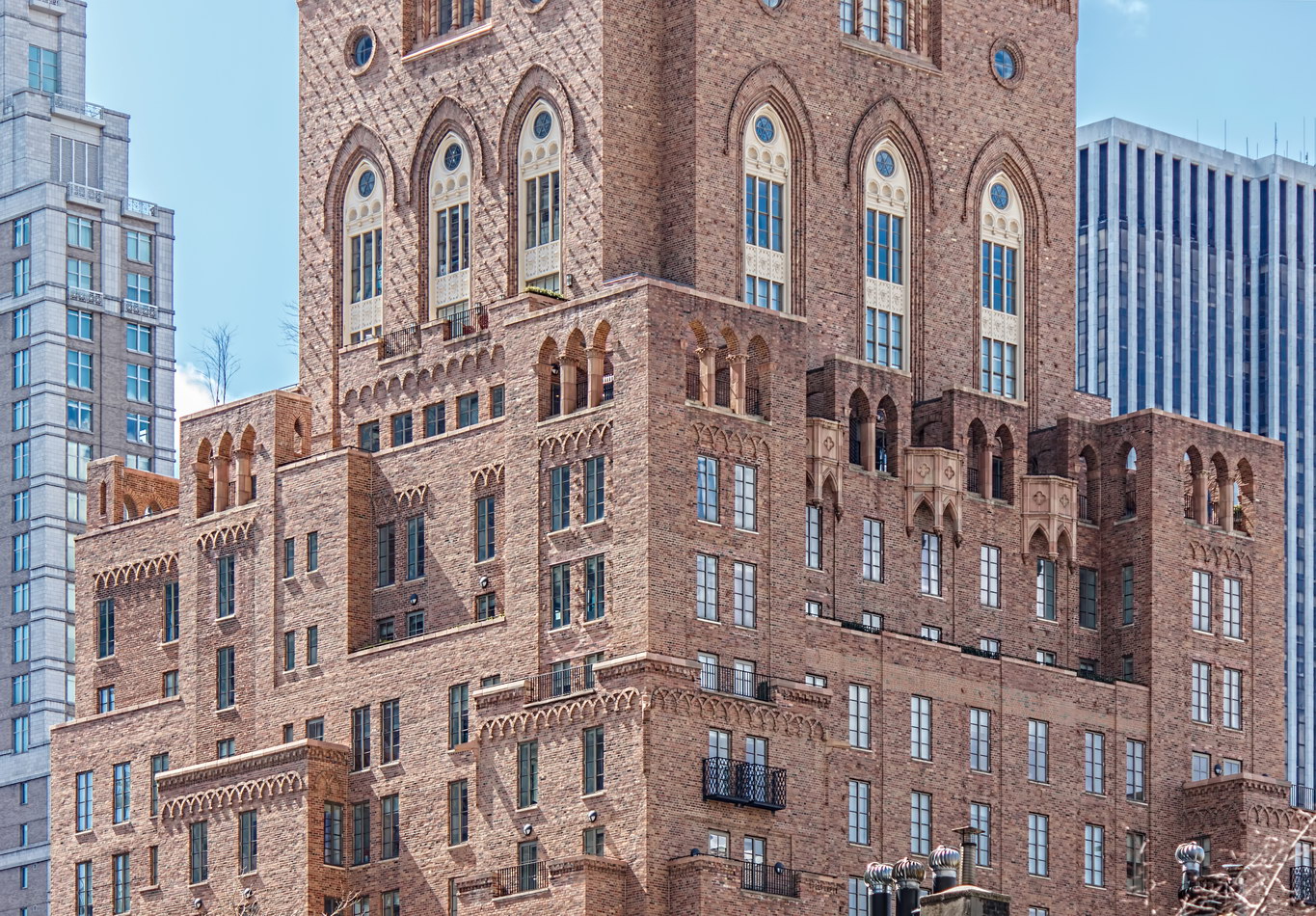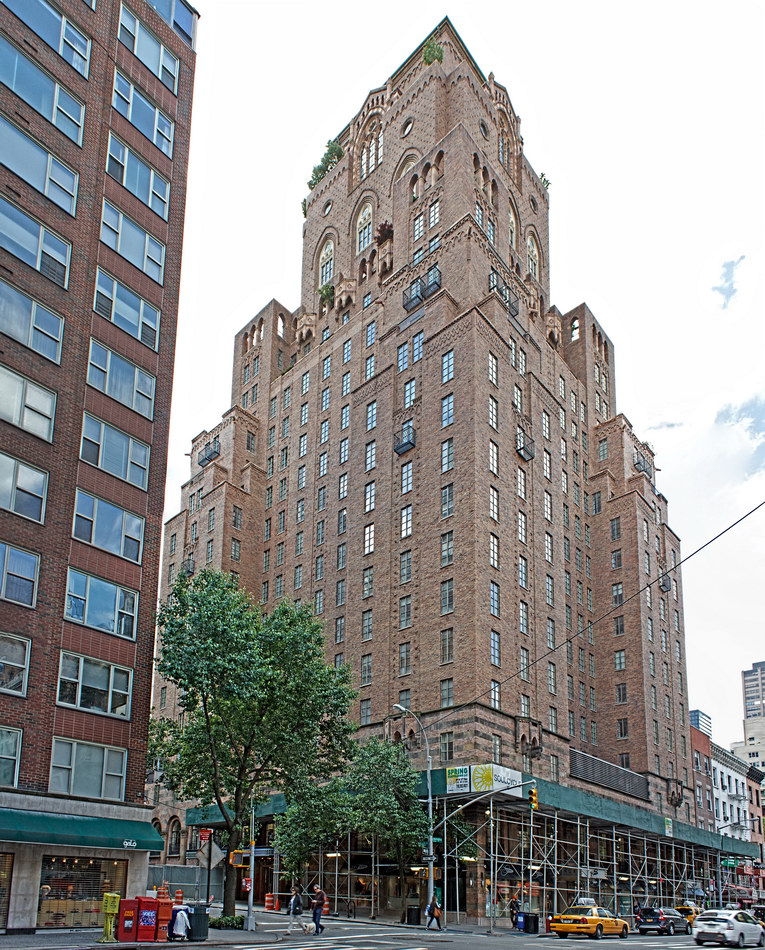When the well-respected McKim, Mead and White entered the design competition for the Municipal Building as a favor to then-Mayor George B. McClellan, the firm had never designed a skyscraper. Yet their William Mitchell Kendall came up with a plan that not only won the competition, it served as a model for at least ten other buildings in the U.S. and the Soviet Union.
The design inspired Cleveland’s Terminal Tower (1930), Chicago’s Wrigley Building (1920) and Moscow’s “Seven Sisters” – seven Stalin-era structures designed at the end of World War II (an eighth was designed but never built).
The Municipal Building, in turn, was inspired by the 1196 Giralda Tower in Seville – originally a mosque’s minaret, then annexed by the cathedral that replaced the mosque. An earlier minaret – Koutoubia, in Morocco – may have inspired Giralda tower. (See the New York Architecture – Giralda Towers article.)
The Municipal Building also borrowed its central arch from Rome’s Arch of Constantine, and the colonnade from Bernini’s at St. Peter’s. (Chambers Street used to pass under the Municipal Building, through the arch.)
The building is the first building in New York to incorporate a subway station in its base. (The 4, 5 and 6 Brooklyn Bridge/City Hall and J, M and Z Chambers Street stops have a common entry via the building’s southern arcade.)
“Civic Fame,” the 25-foot-tall gilded statue atop the Municipal Building, is New York’s third-tallest statue, after the Statue of Liberty and “Bellerophon Taming Pegasus” at the Columbia Law School. Like the Statue of Liberty, “Civic Fame” is a hollow copper shell on an iron frame. The statue’s left arm fell off in 1936, crashing through a 26th-floor skylight into what was then a cafeteria.
Municipal Building is among the world’s largest governmental buildings, built to accommodate the agencies governing the five boroughs, consolidated in 1898. The 40-story monument houses more than 2,000 employees in nearly 1 million square feet of space.
The Municipal Building has appeared in several films (including 1984’s Ghostbusters), television shows and video games. The building was designated a NYC landmark in 1966 – only 52 years after completion. (And the Landmarks Preservation Commission itself moved into the building in 2001.)
Municipal Building Vital Statistics
- Location: 1 Centre Street at Chambers Street
- Year completed: 1914
- Architect: William M. Kendall (McKim, Mead and White)
- Floors: 40
- Style: Renaissance
- New York City Landmark: 1966
- National Register of Historic Places: 1972
Municipal Building Suggested Reading
- Wikipedia entry
- NYC.gov – public buildings site
- NYC.gov – sculpture details
- NYC.gov – “Civic Fame” statue
- Emporis database
- New York Architecture – Giralda Towers article
- NYC Landmarks Preservation Commission designation report
- Trimble 3D Warehouse item
- Spook Central “Ghostbusters” Companion site
- “The Landmarks of New York: An Illustrated Record of the City’s Historic Buildings (Excelsior Editions)
,” Barbaralee Diamonstein-Spielvogel, p. 477.
